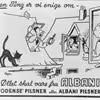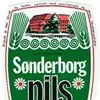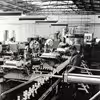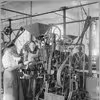Beer from Fuglsang, Albani, Faxe …
Denmark has about 200 breweries today, most of which are the so-called microbreweries which have shot up in the last twenty years. The “beer map” of today, thus resembles that of the early 20th century where a local brewery was to be found in every corner of the country.
Denmark has a long tradition for brewing beer. Until the 19th century, this was done especially in farmsteads, while in towns, small craft breweries supplied the towns’ inhabitants with beer. The home-brewed top fermented beer, however, received competition in the latter half of the 19th century from the advent of the industrial brewery. The new breweries settled on bottom-fermented pilsner types inspired by the Bavarian tradition that required long storage. After the successful launch of the Carlsberg Brewery in 1847, the ensuing decades saw breweries established throughout the country.
Around 1900, Denmark had over 300 breweries. The production of beer increased steadily throughout the 20th century, while the number of breweries decreased. The large ones swallowed the smaller ones, until in the middle of the 1990s, only a handful of huge breweries remained. However, this development, as mentioned above, changed when in the noughties, it became trendy to drink special beer produced by small craft breweries.
In local- and town archives, you will find a wealth of material on the history of breweries. In certain archives, almost completely intact sets of archive material from breweries exist, while in a large number of archives, we find photos, films, advertisements and newspaper cuttings on the local brewery. The portal to all this wealth is arkiv.dk. See, for example the following:
Fuglsang Brewery
Albani Brewery
Faxe Brewery
Ceres Brewery
Tuborg Brewery
Refsvindinge Brewery
Slotsmøllen Brewery
Carlsberg Brewery
Stjernen Brewery





